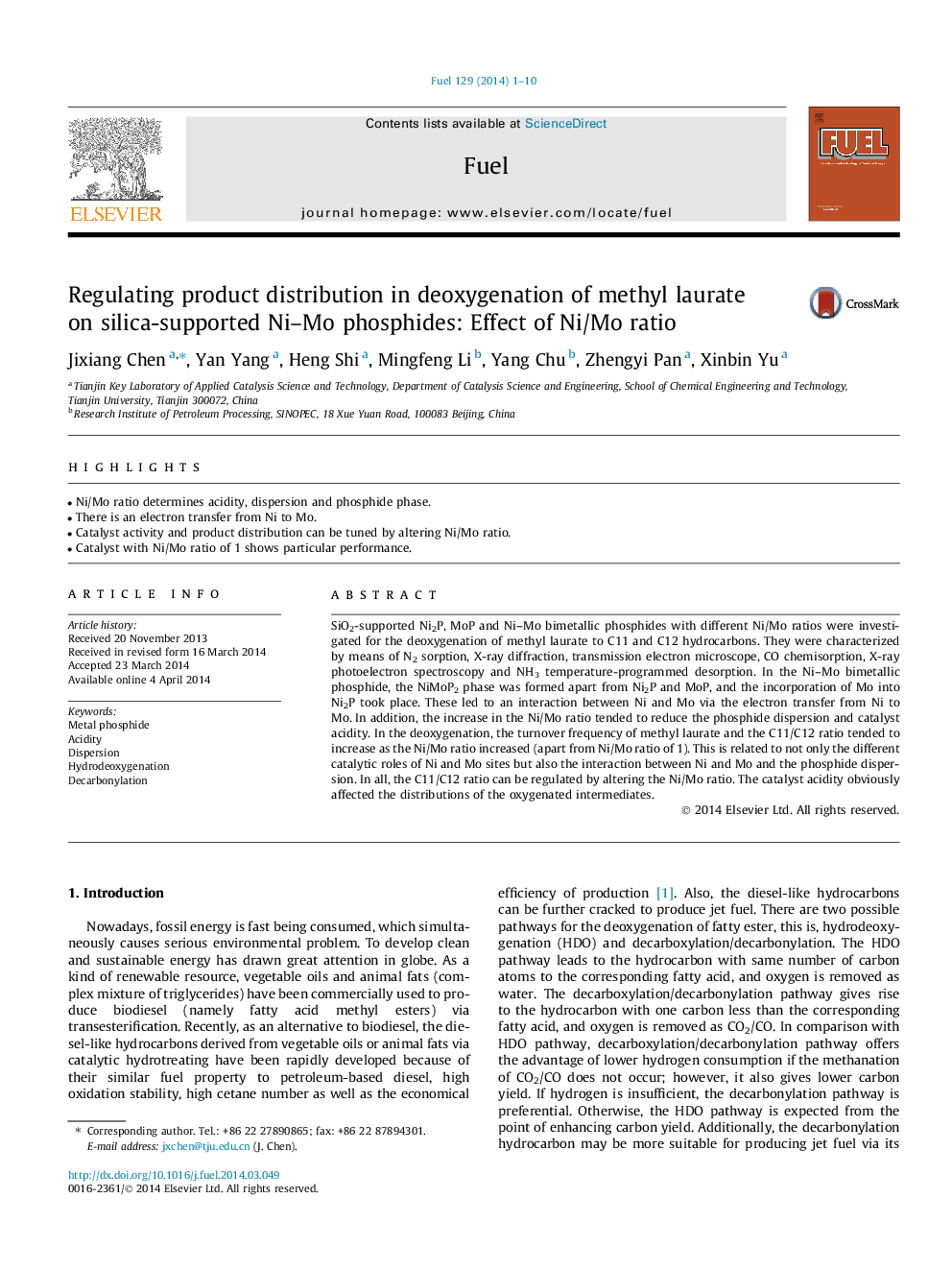| Article ID | Journal | Published Year | Pages | File Type |
|---|---|---|---|---|
| 6637461 | Fuel | 2014 | 10 Pages |
Abstract
SiO2-supported Ni2P, MoP and Ni-Mo bimetallic phosphides with different Ni/Mo ratios were investigated for the deoxygenation of methyl laurate to C11 and C12 hydrocarbons. They were characterized by means of N2 sorption, X-ray diffraction, transmission electron microscope, CO chemisorption, X-ray photoelectron spectroscopy and NH3 temperature-programmed desorption. In the Ni-Mo bimetallic phosphide, the NiMoP2 phase was formed apart from Ni2P and MoP, and the incorporation of Mo into Ni2P took place. These led to an interaction between Ni and Mo via the electron transfer from Ni to Mo. In addition, the increase in the Ni/Mo ratio tended to reduce the phosphide dispersion and catalyst acidity. In the deoxygenation, the turnover frequency of methyl laurate and the C11/C12 ratio tended to increase as the Ni/Mo ratio increased (apart from Ni/Mo ratio of 1). This is related to not only the different catalytic roles of Ni and Mo sites but also the interaction between Ni and Mo and the phosphide dispersion. In all, the C11/C12 ratio can be regulated by altering the Ni/Mo ratio. The catalyst acidity obviously affected the distributions of the oxygenated intermediates.
Related Topics
Physical Sciences and Engineering
Chemical Engineering
Chemical Engineering (General)
Authors
Jixiang Chen, Yan Yang, Heng Shi, Mingfeng Li, Yang Chu, Zhengyi Pan, Xinbin Yu,
